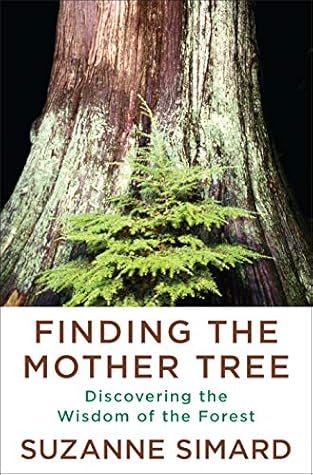More on this book
Community
Kindle Notes & Highlights
Read between
June 16 - December 2, 2021
Upon developing the film, he saw the path the charged particles had taken as they moved from pine to pine.
They had traveled through the underground fungal network.
I wondered if this could be detected outside the lab, in real forests.
Mabel Lake,
hyphal links.
phloem—the
sieve cells
xylem—the
photosynthate
(While leaves are the source of photosynthate, roots are sinks.)
turgor pressure.
the source-sink gradient
Simard Mountain.
hyphae
Then I would know if trees were in a more sophisticated tango than just a competition for light.
triplet
Barb asked why I’d included cedar next to the birch and fir.
arbuscular mycorrhizas,
ectomycorrhizas
birches
fir
confirming there was a steep source-sink gradient between them.
From source birch leaves to sink fir roots.
Kristina Arnebrant,
showed that alder delivered nitrogen to pine through mycorrhizal connections,
foliar s...
This highlight has been truncated due to consecutive passage length restrictions.
Like between the nitrogen-fixing alder and nonfixing pine in Kristina’s study.
With gradients in both carbon and nitrogen—carbon in sugars and nitrogen plus carbon in amino acids—birch was perfectly equipped to shuttle more food to fir than it received in return.
Stein River,
Asking Rock
Dan Durall,
K.J. Beiler, D.M. Durall, S.W. Simard, S.A. Maxwell, and A.M. Kretzer, “Mapping the Wood-Wide Web: Mycorrhizal Networks Link Multiple Douglas-Fir Cohorts,” New Phytologist, 185 (2010).
Teste, F. P., Simard, S. W., and Durall, D. M. 2009. Role of mycorrhizal networks and tree proximity in ectomycorrhizal colonization of planted seedlings. Fungal Ecology 2
Durall, D. M., Gamiet, S., Simard, S. W., et al. 2006. Effects of clearcut logging and tree species composition on the diversity and community composition of epigeous fruit bodies formed by ectomycorrhizal fungi. Canadian Journal of Botany 84.
3 articles in 3 journals in 2009, p. 327
learned that half of the carbon was shuttled and stored belowground—in roots, soils, and microbes such as mycorrhizal fungi.
It was the early 1990s,
climate change
I was so focused on what moved through the mycorrhizal networks
But Dan insisted we could do better than that.


